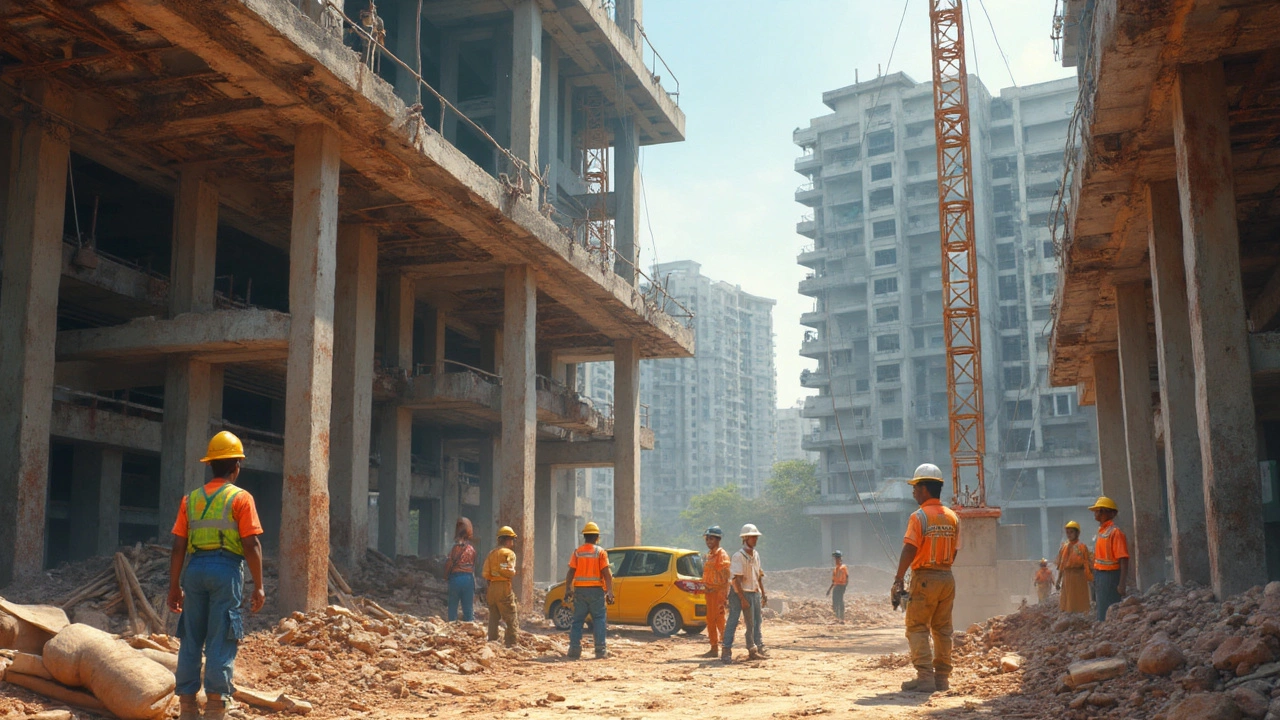Ever walked past a construction site downtown and wondered why those office towers seem to take forever while new homes pop up faster than mushrooms in wet grass? The gap isn’t just about size. The reality is, commercial and residential projects play by two completely different sets of rules. Let’s unravel what sets them apart and why mixing them up can torch your budget or send your timeline off the rails.
Project Purpose, Scale, and Stakeholders
Commercial projects and residential builds don’t just serve different purposes—they operate in totally different orbits. Residential projects are all about homes: apartments, single-family houses, duplexes. We’re talking kitchens, backyards, the works. The guiding goal is liveability and personal comfort. One owner, sometimes a family, and maybe the odd investor looking to flip or rent. Pretty straightforward.
But commercial projects? These are the spaces that shape how we work, shop, and play: office buildings, shopping centres, warehouses, hotels. What’s wild is how the use affects the rules. For example, designing a commercial space for a hospital in Wellington means accommodating advanced medical tech, dozens of specialized rooms, and tough health safety guidelines. It’s never ‘just build a bigger house’—the building’s purpose drives every tiny decision, from ceiling height to door width.
Ownership gets more tangled on the commercial side. You’re likely dealing with companies, government bodies, tenants, boards—often all at the same time. This web complicates approvals, changes, and project management. Compare that to residential, where you might just answer to a couple or one main client. Each extra stakeholder means more meetings, more input, more opportunity for scope creep.
Design, Materials, and Building Systems
The visible differences between a cosy home in Karori and a twelve-storey office in Wellington’s CBD are only the tip of the iceberg. With residential, you’re aiming for comfort, usability, and personal style. Cladding, windows, roof shape—lots of customization. Most houses go up with timber framing, Gib, insulation for warmth, and a focus on budget-friendly materials that still meet local standards.
On the flip side, commercial buildings chase strength and adaptability. Think concrete slabs, steel framing, heavy-duty glass. These materials can handle big spans, heavier loads, and bigger crowds. Plus, commercial spaces are built to change. A company might gut an entire floor to update its layout in five years, so modular design is common. You don’t see much of that in the average Kiwi home.
Then there’s building systems. Residential heating is usually split between heat pumps, wall heaters, and sometimes underfloor heating in pricier builds. Commercial projects get way more complicated: think centralized HVAC, dedicated server rooms, industrial plumbing, fire sprinklers everywhere, and grid power backups. The technology underneath the surface is slower to spot, but it’s a big reason a commercial budget can skyrocket.

Regulations, Codes, and Permits
This is where most headaches start for builders and owners. Residential projects deal with the New Zealand Building Code for dwellings, along with local council rules on setbacks, daylight access, and insulation. The paper trail for a three-bedroom house in Wellington isn’t fun, but compare it to the mountain of documentation for a big-box retail store and it suddenly looks quaint.
Commercial projects must comply with extra codes and standards around things like crowd safety, disability access, hazardous materials, fire egress, and often seismic strengthening (no joke, after 2016's quake we know how vital that is!). If you’re converting an old building into a café, you might have to earthquake-proof the whole place before you can even start on decor.
Council inspections are regular for every type of build, but commercial jobs expect more check-ins at every stage. If a hospital construction fails a fire safety check, work stops cold until it’s fixed—a huge cost and timeline hit. There’s also health and safety: commercial builds are required to have robust site management plans, safety officers, and worker training. The costs and complexity stack up fast.
Timeline, Budget, and Financing
Looking at a typical residential build, most Kiwis expect a timeline of six months to a year, unless there are supply hold-ups or wild weather. Costs are, while not exactly ‘cheap’, relatively predictable—even with the recent price hikes in Wellington and the rest of New Zealand. Financing often comes from a bank mortgage, sometimes a mix of savings or help from family. It’s a well-trodden path with heaps of advisors, templates, and apps to help you budget.
Commercial projects are a different animal. Timelines can run up to several years, especially for large developments. You need intricate scheduling for subcontractors, suppliers (ever tried importing a bespoke steel beam during a global supply crunch?), and endless inspections. One 2023 study from the New Zealand Institute of Building found that commercial build delays doubled after the pandemic, pushing average completion times in Wellington offices to about 24 months.
Budgeting is tougher because there are more unknowns. Big projects mean bigger cost overruns when designs change. The funding process is also layered—developers might pull together bank loans, private investments, and tenant pre-commitments, all while juggling financial regulations. Missing approvals or market shifts can throw a spanner in the works. As for tips: always build a buffer into your budget, and never lock in tenants before construction plans get their sign-off.

Project Management, Challenges, and Future Trends
Project management for residential work isn’t easy, but it’s relatively direct. You’re looking at clear expectations: move-in date, quality fittings, good communication. One builder, one owner; problems can usually get solved over a cup of coffee at the site.
Commercial builds, however, are like conducting a full orchestra during a storm. There are layers on layers of teams: architects, engineers, consultants, dozens of subcontractors. You’ll use serious project management software; Gantt charts rule the day. Delays have snowball effects—a plumbing holdup can mean electricians and drywallers lose their window, blowing the whole schedule.
Challenges? Loads of them. Think about supply chain snarls—if just one product shipment gets stuck offshore, every trade down the line is affected. In Wellington, a 2024 survey found more than half of commercial site managers cited materials delays as their number one stressor. Then come labour shortages, fluctuating material costs, and strict council inspections. That’s why experienced project managers are worth their weight in gold.
Looking ahead, the lines between commercial and residential are actually starting to blur. Mixed-use developments—think apartment towers with shops, gyms, and even clinics downstairs—are booming in Wellington and Auckland. This means builders and developers need to master regulations and design tricks from both worlds.
Here’s a breakdown highlighting the main differences:
| Aspect | Residential | Commercial |
|---|---|---|
| Purpose | Personal living | Business, public use |
| Materials | Lightweight (timber, Gib) | Heavy-duty (steel, concrete) |
| Regulations | Simple (dwellings) | Complex (crowd safety, accessibility) |
| Stakeholders | Few (owners) | Multiple (companies, tenants) |
| Timeline | 6-12 months | 1-3 years or more |
| Budget | Bank mortgage | Loans, investments, pre-leases |
To wrap up, the difference between commercial and residential projects is bigger than most people realize. Next time you see scaffolding on your street, you’ll know—behind the tarps and tradies is a whole world of unique challenges and smart solutions. For anyone looking to step into either, learn the rules, pick your battles, and always double-check your budget before you sign on the dotted line. The stakes, and the learning curves, are much bigger than you’d expect.
